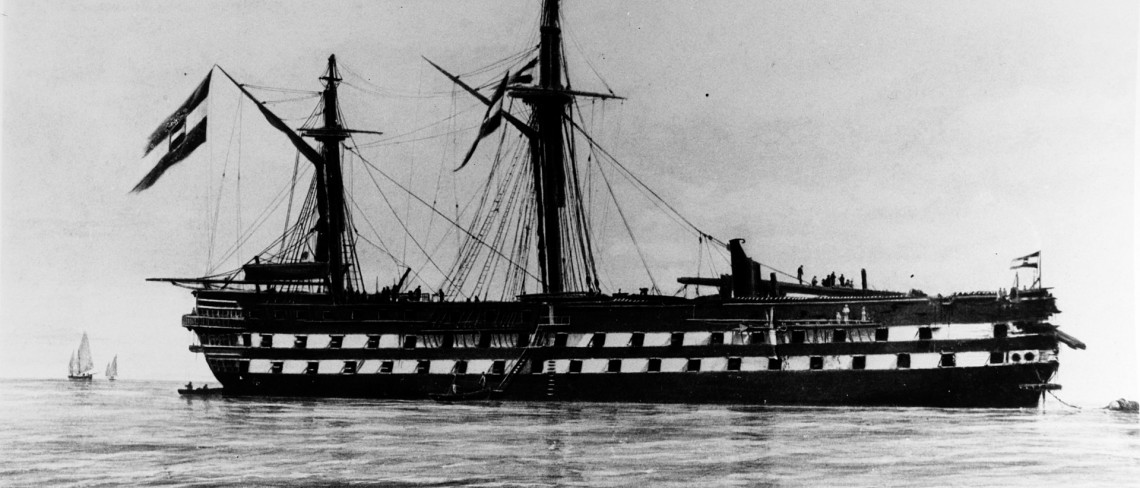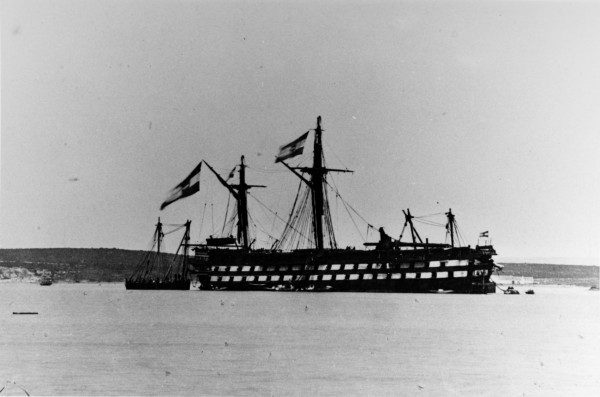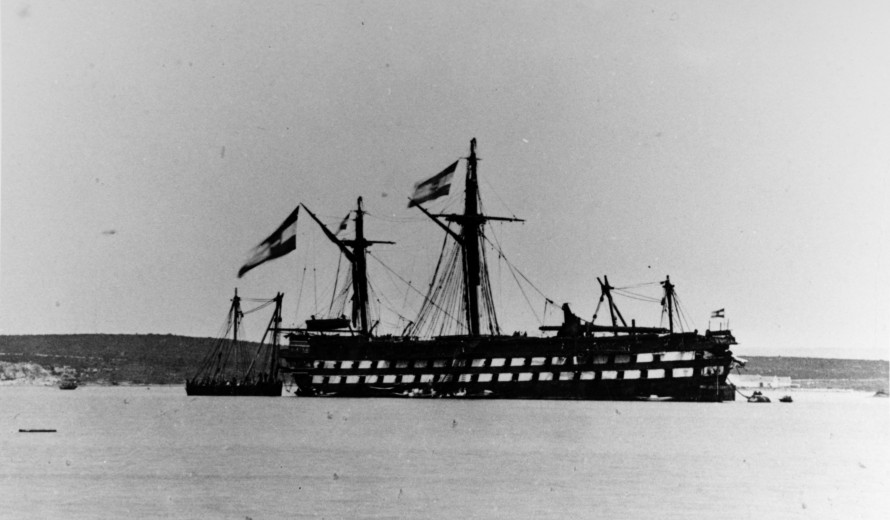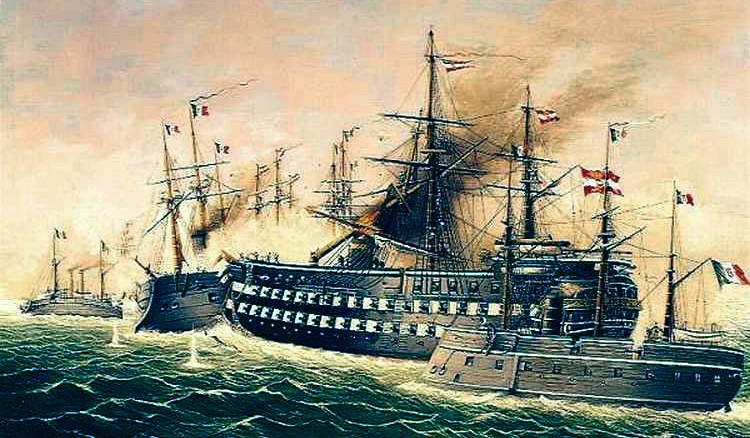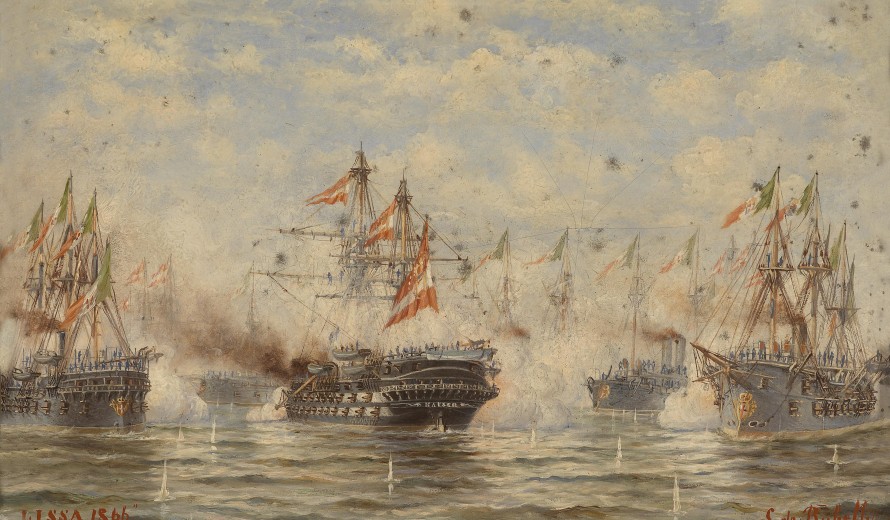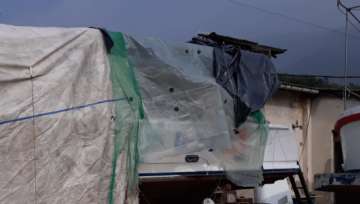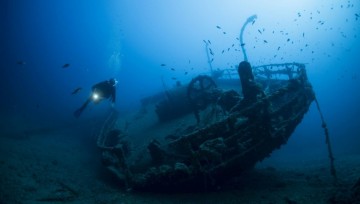A ship of the line was a type of naval warship constructed from the 17th through to the mid-19th century to take part in the naval tactic known as the line of battle, in which two columns of opposing warships would manoeuvre to bring the greatest weight of broadside firepower to bear. Since these engagements were almost invariably won by the heaviest ships carrying the most powerful guns, the natural progression was to build sailing vessels that were the largest and most powerful of their time. In the 1850s they were considered obsolete and no longer useful on a modern naval battlefield.
SMS Kaiser was a heavy ship of the line built in 1858 at Pola Shipyard, at the very end of the ship of the line age. Not heavily armored and with it’s distinct gun placement it has become obsolete but in it’s first battle, Battle of Lissa in 1866 it single handedly took on 4 fully operational Italian ironclads and proved victorious.
Built with the modified plans for HMS Agamemnon at the Pola shipyard it was one of the last ships of the line ever built. 74 meters long and with a beam of 16 meters it’s displacement was 5 720 tons. It was crewed with 900 man and used both sails and a two cylinder horizontal steam engine powering a single screw propeller 5.75 meters in diameter. Of its original armament it had 16 60-pounder guns, 74 30-pounder smoothbores and two 24-pounder breech loaders before it was retrofitted with a battery of 10 230mm 23-pounder muzzle-loading guns.
It’s first combat missions were in the Second Schleswig War where it kept a blockade at Cuxhaven without entering any combat. In 1866 it joined Rear Admirals Wilhelm von Tegetthoff fleet. After sailing to Ancona and trying to provoke the Italian fleet the Kaiser fell back to Pula. When the news of Persanos attack on Lissa reached the rear admiral he decided to engage the Italian navy right there.
On the morning of the 19th of July the Austrian navy caught the Italians split in 3 groups and preparing to land on Vis. Due to miscommunication the Italians battle line was divided in two and although outnumbered and outgunned Tegetthoff ordered a attack. The Austrian fleet sailed straight through the gap hoping to cut the Italians in two and start a skirmish.
The Kaiser under command of Baron Anton von Petz went further south and tried to attack the unarmored Italian ships at the back of the line. However due to the Italians disorganizations Re di Portogallo, the largest Italian ironclad, Affondatore, the best armoured Italian ironclad and 3 more ironclads Castelfidardo, Varese and Principe di Carignano, all armored with iron bands above their waterline, engaged Kaiser. Just try to imagine the feelings of those sailors on Kaiser, battling 3 ironclads at once in their wooden ship of the line. In the middle of the melee Kaiser rammed Re di Portogallo, all the while still exchanging broadsides with Castelfidardo, Varese, and Principe di Carignano. As it tried to pull back Kaiser got a full hit from Re di Portogallo light guns and caught fire. Seeing the weekend Kaiser Persano commanding Affondatore tried to ram it. 2 attempts failed but being battered by pretty much every ship in sight Kaiser took heavy damage, loosing it’s foremast, funnel and having multiple breaches in it’s side. Von Petz decided they have done more than enough and left the battle leaving for the port of Lissa to make repairs. As they were sailing out of sight a massive explosion was heard, Palestro, one of the Italian ironclads caught fire and exploded. A few minutes before that Re di Italia went down after being rammed by Tegetthoff admiral ship Erzherzog Ferdinand Max. The Austrians won the day.
It’s hard to overemphasize the success of Kaiser in this battle. Not only fighting and heavily damaging the Italian admiral ship Affondatore but winning duals with 3 ironclads at once and stopping Re d’ Portogallo from engaging in battle with the rest of the Austrian fleet.
SMS Kaiser the day after the Battle of Lissa
After the massive success at Lissa the rest of Kaisers history is not as bright.
Soon after the battle it was decided to be rebuilt with iron hull above the water line and a casemate was added with additional modern guns. The modifications were done in a hurry and with very little funds. The Kaiser was soon taken into port in Pola where it was used only for short range tours. After the second rearmament in 1880 it remains in service until 1893 when it was decommissioned and used as a barracks until the end of the Great War.
The final fate of the ship is unknown, after the war it was captured by Italians who most likely scuttled her as revenge for the damage done in Battle of Lissa.
